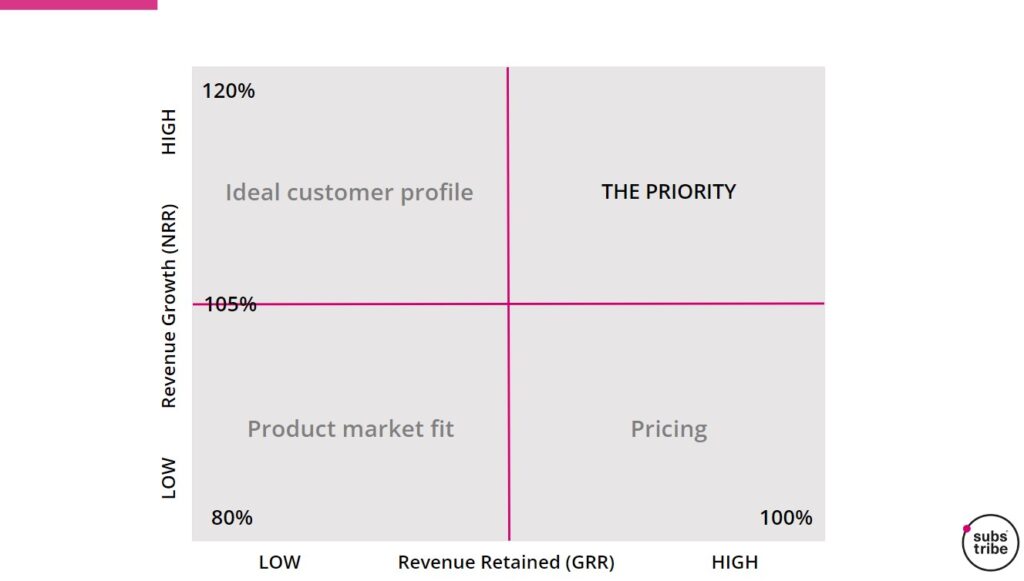That’s what we asked a room of b2b subscription leaders responsible for billions of NRR and GRR subscription revenues. What are the missing insights you need to carry on growing? Can your revenue retention rates climb ever higher? How high is too high?
The way to rocket retention still involves the subscription fundamentals. Knowing the customer, the job you’re hired to do, and how you solve for that. But it’s also about learning – and accepting the need to relearn – about:
- How to increase the value you provide to customers with product
- How to embed – and keep embedded – products in customer workflows
- How to impact the health and wealth of your customer’s organisation
There is an inflection point after you lay the foundations…product packaging, extending use cases, customer success, pricing models, and discount management. They will get you so far…but how do you rocket retention?
Rocket retention #1 – the science bit
It’s hard to learn – and relearn – without frameworks. There is, “a lack of science around retention strategies.” And a, “gap in understanding retention metrics for different customer segments.” These are experienced people.
We’ve got nothing against spreadsheets… But we prefer visuals. It’s easier to get a team enthused, to think how to disrupt, innovate and grow. Using the Substribe performance grid helps to picture what’s going on.

The priority for subscriptions is getting into the top right box and staying there. That’s where revenue compounds. That’s where value lives. Several of the people in the room have broken past the 120% barrier btw.
Each marginal gain – of even one percentage point – is incredibly valuable to a b2b subscription business. But not enough people recognise this fact.
Substribe CEO member
Rocket retention #2 – the measuring bit
In the latest survey of companies providing b2b information services…
- 63% say there is more focus on retention
- 31% say their organisation is optimised for retention
- 13% use net revenue retention as a KPI for cross functional teams
(Source: Substribe 2023)
But hang on! How can a company optimise for retention if it’s not using retention as a performance measure?
As the story goes, Hubspot’s retention sucked…until it got retention embedded into every team.
Rocket retention #3 – the error bit
‘There’s a concept in aviation called the 1-in-60 Rule. It says that a 1-degree error in heading will cause a plane to miss its target by 1 mile for every 60 miles flown. The concept applies directly to your progress and growth: Tiny deviations from the optimal course are amplified by distance and time. A small miss now creates a very large miss later.’ – Sahil Bloom, Curiosity Chronicle.
The optimal organisation will spot even the slightest drift off course. They’re not busy getting busy. The leaders who are already performing much better than their peers are:
- studying customer segments
- analysing subgroups to develop new products or improve existing ones
- placing increasing significance on product development
- understanding customer pain points
- reprogramming teams to prioritise growth
Finally, here are a few curated observations from a leadership group with billions of retention revenue under management:
Optimising revenue retention is about
- product alignment
- exercising pricing power (with respect)
- identifying profitable customers
- collaboration among different teams
- a focus on finding the right messaging and solutions for customers
- accepting the need to adapt product fit
- using product as a commercial lever for core customers
- deploying high touch analysts
“It requires coordination between the sales team, customer success managers, and operations to drive effective customer engagement and relationship management. And it must be fueled by customer insight and data analysis to make informed decisions for the company’s growth and profitability.”


Leave a Reply